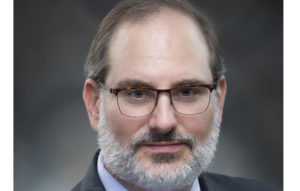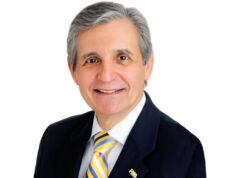
The Society for Vascular Surgery (SVS) is urging members to join the American Medical Association (AMA) in a bid to maintain a critical voice in the decision-making process for the specialty.
The reason is simple: Unless the percentage of dual members increases, the Society is in danger of losing its place at the table when critical decisions are made regarding coding for vascular procedures and the Relative Value Scale (RVS) Update Committee (RUC), which advises Medicare on how to value a physician’s work, says SVS Policy and Advocacy Council chair Matthew Sideman, MD.
The RUC is a multispecialty committee dedicated to describing the resources required to provide physician services which the Centers for Medicare & Medicaid Services (CMS) considers in developing Relative Value Units (RVUs). Ultimately, these recommendations are critical to physician reimbursement.
To participate in the AMA’s RUC meetings, a specialty must have a seat in the AMA House of Delegates. To have that important seat—which provides that specialty with a voice in decision-making—the organization must have a certain percentage of members who also are AMA members, said Sideman.
Sideman acknowledged that some SVS members hold ill will against the AMA because of the payment cuts that went through at the beginning of the year. “Some of our members see the AMA as part of the problem, and not the solution,” he said. He urged all members, despite that sentiment, to join the AMA.
“Whether you agree with the AMA, or if you don’t feel like they speak for you, they are the way to be heard in the current system,” said Sideman. “The AMA is how we have a voice. If we lose our spot there, we lose our voice.”
The AMA wields great importance in its role in sending recommendations for reimbursement to CMS. Should SVS lose its all-important spot in the House of Delegates, the SVS will no longer be able to influence coding and RVU decisions. Members stand to lose far more than the $420 membership dues, he said. Costs are lower for those in their first four years in practice, and for military physicians and those working in the Department of Veterans Affairs ($280.)
Although the RUC provides recommendations, CMS makes all final decisions about what Medicare payments will be. Many physicians believe, erroneously, that the RUC determines payment. Instead, the group of physicians provide comments to the government about policy. The committee summarizes all the deliberations and forwards them to CMS and CMS determines RVUs and values. Congress then sets the conversion factor for the Medicare Physician Fee Schedule, which determines reimbursement.
Sideman said if SVS loses its representation, SVS could submit its own comments on codes relevant to vascular procedures. “But those recommendations would be seen as biased and self-serving, whereas those from the RUC process are deliberated by multiple specialties; they have the ‘stamp of approval’ of an independent multispecialty body.”












